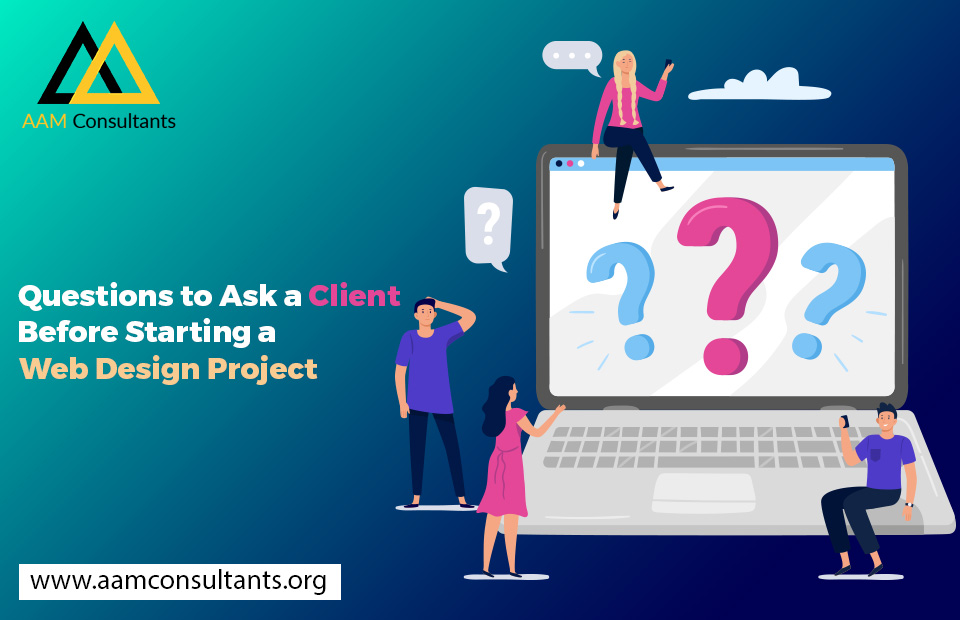Hundreds of websites are designed each day. But there are few which captivates the audience and keeps them in touch. The rest of the websites seldom catch the eye, or sometimes these websites stop having any audience. The lack of essential elements or gripping design is not the reason, but the irrelevance of the theme to the purpose of the website.
The clarity in communication is one of the reasons. The designers fail to fetch enough information from the clients. To bear the fruits of your efforts and not waste your time and effort, you must have clear communication with your client about the design he would like to have.
The right kind of information helps in building the perfect design and achieving the key targets. Let us have a look over the information you would require to ask your client before designing:
The type of Business:
The description of your client’s business will help you design a familiar and effective interface. Ask about their type and view of the business, and it will certainly make you think from the client’s perspective. Such an inquiry will help you figure out the requirements from an inside view.
For a bookselling business, have an idea of the preferences and the value of the brand. In case your client focuses more on classics than modern literature, then develop a classical design. Such a design will help in building the brand value.
Goals and Features:
Let them clearly articulate their goals. Ask them what they are actually looking for. Is it the products they need to sell? Are the sales decreasing? Is there some problem with the design?
You have to be specific as most of the clients have a very rough idea about their goals. The goals roam in their imagination, and you have to be Picasso of them.
The features your client would like to offer the visitors will help you design accordingly. For an effective and appropriate design like Software House in Islamabad make, you must ask requirements like making the design compatible for mobile users to provide services like signing up for the newsletter and live chat representative.
Picture of the Design:
There is always a picture of the design in your client’s mind. Bring out that picture from your client’s imagination and look at the idea your client has. The investment your client is putting in must not go in vain. Make sure that the picture they are providing will meet the requirements.
A picture is worth a thousand words. Ask them for a picturesque idea or the already established designs on the internet which they would like to have on their websites.
Figure out the Problem:
The client’s perspective is not always right. The design they have asked for might not comply with their business type. It is not their job to figure out the actual problem in their already existing design. The cause they have suggested may be wrong. They are not professional here, but you are!
Considering the bookselling example, your client may be concerned about the less classical design, but the reason for fewer sales may come out as the audience with modern literature preferences.
Budget & Timeline:
The inquiry about the budget will decide the effort you will put into this project; either this project is worth your time and effort or not. You must not postpone this inquiry to prevent any wastage of time and effort.
In case if the client’s budget meets your demands and values your time, now, you need to ask for the deadline. If the client is unsure, then suggest a schedule to meet the targets.
Ideal Customer:
An absurdly designed online bookshop with kids as a targeted audience will never make any sales. The kids would be interested in designs portraying Harry Potter and Hobbit. So, before commencing the design, make sure that you have the right information and idea of the targeted audience. You can consider these factors while inquiring about the targeted audience:
- Demographics – income, age, gender, education
- Culture and Arts – tone, language, preferences
- Psychographics – lifestyle, purchasing, and media consumption habits
Do not despise the kids with your designs as they do not forget their childhood experiences. Just a pun intended.
Success and Failure:
The idea about the definition of a client’s success will help you design in a better way. With the acknowledgment of success from the client’s point of view, you will have a clear image of the targets that you will need to focus on. The inquiry about success must not restrict to quantifiable objects but also include the abstract idea of it.
With the possibility of success comes the possibility of failure. So, the recognition of factors is significant. The must-not-haves, disinterests, and preferences of the client help in wiping off the chances of failure.
Designs to Prevent:
You may have an ideal image of the design you are going to develop for them. But, likely, your client may dislike it. Let not make your client a design that is not preferred. Ask them for the changes they want to have in their design. Go with some examples of their disliked designs.
You do not want to waste your time and effort, so better start with images and style guides your client has provided to you.
Do you have some other questions that would bring perfection and appropriation to the design? Let us help out each other in the comments.




